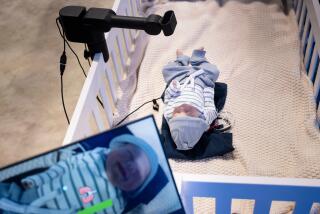CES 2013: Sharing content from phone to TV to kitchen and beyond
I love the idea of a smart home, one where devices talk to one another and to me (figuratively speaking) in order to offer more and better services. Judging from the demonstrations at this week’s Consumer Electronics Show, it’s still a work in progress, with some functions much closer to maturity than others.
The ability to connect television sets, stereos, computers and mobile devices to a home network is now a standard feature in every manufacturer’s gear. What was new this year was the widespread use of near-field communication technology to make a direct connection from one device to another.
For example, Sony showed how users could take a Sony smartphone with a near-field chip, tap it to a similarly equipped remote control for a TV set, then use the TV to mirror what’s on the phone’s screen. The tap establishes the pairing, then the data is sent via Wi-Fi. Similarly, bumping a phone on the near-field logo of a Sony boom box or sound bar lets the phone stream music to the speaker via Bluetooth.
The same sort of phone-to-device streaming can be done with non-Sony devices and those that aren’t equipped for the one-touch mirroring, as long as they comply with a common home networking standard. But the near-field chip makes the process vastly simpler.
Another example was LG, which uses near-field technology to pair smartphones with its smart appliances as well as its TV sets. Its sharing technology goes one step further than Sony’s, though. Not only can phones send content to LG refrigerators and TV sets running LG’s content-sharing app, but they can also draw content off the home network remotely from anywhere there’s a 3G or 4G connection.
Panasonic showed a variation on the phone-to-TV theme. Dubbed Swipe & Share 2.0, it lets people copy content from their smartphones or tablets to their TV and vice versa with the swipe of a finger. That means it can be used not only to display on your TV the video you shot with your smartphone, but also to record on your tablet a program tuned in by your TV.
LG’s ability to move content from a smartphone or home network to a screen on the refrigerator was interesting, but that’s not the sort of functionality that will sell smart appliances. What people are looking for is connectivity that makes the appliance do its core functions better.
There was plenty of that on display as well. The ability of major appliances to send troubleshooting information through the Internet is becoming a standard feature. So too are smart energy-management features and the ability to monitor and control some key functions remotely. If you want a washer that will alert your smartphone when it’s time to put the clothes in the dryer, you can have one.
What’s lagging, though, are some key pieces of the connectivity puzzle that would make for a truly smart kitchen. A good example is LG’s smart refrigerators, which can keep track of their contents and the expiration dates of perishable foods. That’s extremely useful information; sadly, it all has to be entered into the refrigerator’s touch screen by hand.
Randy Overton, a national product trainer for LG, said the next-generation refrigerator might add a barcode scanner to make the food-inventory process easier. The ultimate answer, though, would be to have food packages with RFID chips that could be registered automatically by the fridge. Overton said the food industry hasn’t taken that step because there’s been no demand for it. Nevertheless, LG may add that capability anyway, just as it’s made its appliances compatible with Smart Grid-enabled utilities despite their scarcity. “Somebody’s got to start it, and we want to be there for that,” he said.
That’s not to say manufacturers can’t do interesting things in the meantime. If you take the trouble to tell LG’s smart refrigerators what you’re adding and subtracting from their contents, they can suggest menus based on the available ingredients and develop shopping lists for depleted supplies. And future models, Overton said, may have health-management software that can tailor recipe and food recommendations to the various members of a household.
ALSO:CES 2013: Lowe’s Iris smart home system tracks elderly, pets
CES 2013: Mind-controlled helicopters, games for kids with ADHD
CES 2013: MPowered’s Luci solar lamp is collapsible and waterproof
Healey writes editorials for The Times. Follow him on Twitter @jcahealey







